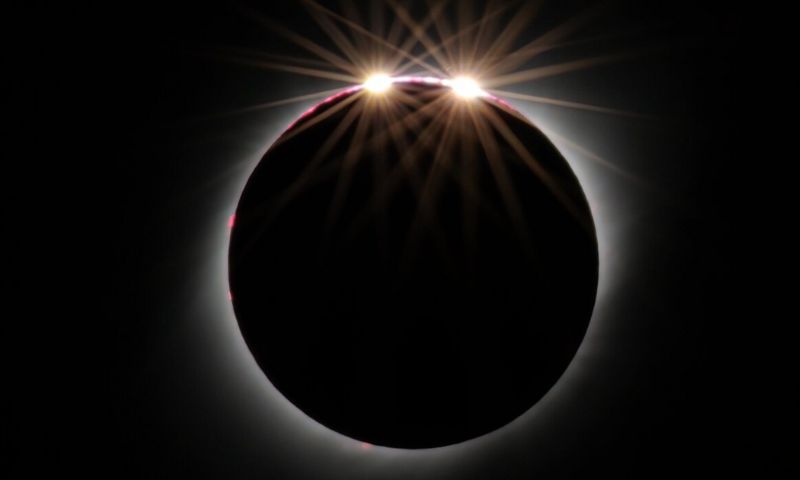LONDON: During Monday’s total solar eclipse, social media erupted with speculation about mysterious red objects at the bottom of the moon. Reports suggested a “solar flare” sighting, with millions on TikTok searching for answers.
However, the reality is quite different. What observers witnessed were prominences, phenomena previously detailed in the guide “Total Solar Eclipse: 6 Things To See And When To See Them.”
Prominences, typically pinkish-red, are common during total solar eclipses, appearing around the moon’s edge. These majestic loops of plasma erupt from the sun’s surface, showcasing its explosive activity.
Here's a closeup of the bright prominence that many people reported seeing with their naked eye during the eclipse. This was captured using two telescopes- at 2000mm and at 3650mm.
These prominences are part of the solar chromosphere, and normally require a specially modified… pic.twitter.com/dfXBihWmgp
— Andrew McCarthy (@AJamesMcCarthy) April 12, 2024
Given the heightened magnetic activity of the sun during its 11-year solar cycle, it was expected to observe prominences during Monday’s eclipse. The triangular shape observed isn’t uncommon, as it was also seen during the previous total solar eclipse on April 20, 2023.
It’s crucial to distinguish between prominences and solar flares. Solar flares are intense bursts of radiation that can trigger coronal mass ejections, potentially impacting Earth’s auroras. However, no such events occurred during the eclipse, as the sun’s activity was relatively low.
There are many (incorrectly) reporting that a #SolarFlare was visible during the #TotalSolarEclipse. This is sadly untrue, and the bright feature seen by millions was actually a prominence (shown below)! These are longer-lived plasma structures, and not explosive like flares. pic.twitter.com/jtiqB8CuvF
— Dr. Ryan French (@RyanJFrench) April 9, 2024
While prominences are exclusive to totality, you can utilize eclipse glasses on sunny days to spot sunspots on the sun’s surface. These dark regions are currently abundant, with two visible during Monday’s partial eclipse phases.
Although the sun is nearing its solar maximum, characterized by sunspot frequency, the next total solar eclipse in the U.S. won’t be until March 30, 2033, in Alaska.

























